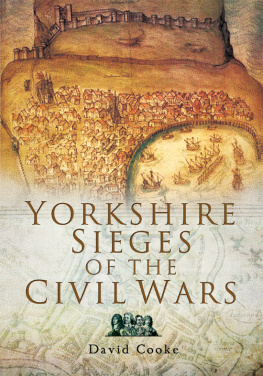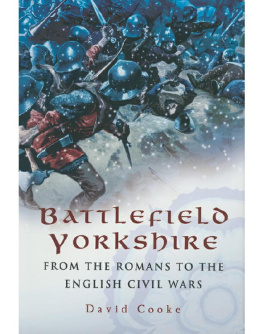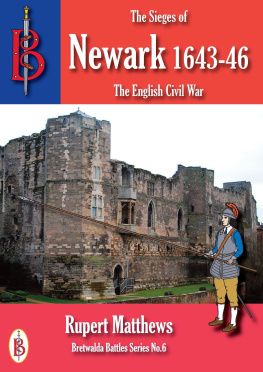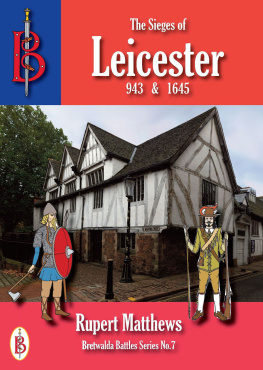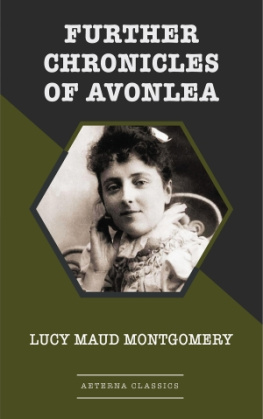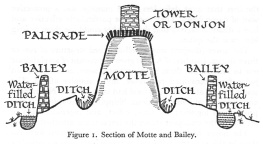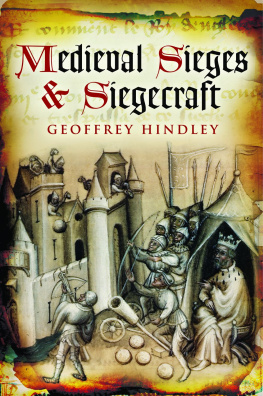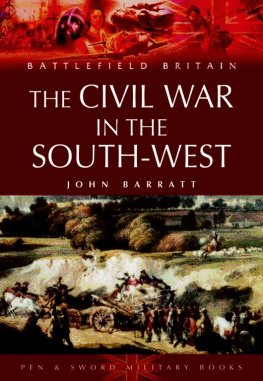

First published in Great Britain in 2011 by
PEN AND SWORD FAMILY HISTORY
an imprint of
Pen & Sword Books Ltd
47 Church Street
Barnsley
South Yorkshire
S70 2AS
Copyright David Cooke 2011
ISBN 978 1 84415 917 8
Digital Editision ISBN: 978 1 78346 131 8
The right of David Cooke to be identified as Author of this Work has been asserted by him in accordance with the Copyright, Designs and
Patents Act 1988.
A CIP catalogue record for this book is
available from the British Library
All rights reserved. No part of this book may be reproduced or transmitted in any form or by any means, electronic or mechanical including photocopying, recording or by any information storage and retrieval system, without permission from the Publisher in writing.
Typeset in 10pt Palatino by Mac Style, Beverley, East Yorkshire
Printed and bound in the UK by CPI
Pen & Sword Books Ltd incorporates the Imprints of Pen & Sword Aviation, Pen & Sword Family History, Pen & Sword Maritime,
Pen & Sword Military, Pen & Sword Discovery, Wharncliffe Local History, Wharncliffe True Crime, Wharncliffe Transport, Pen & Sword Select, Pen & Sword Military Classics, Leo Cooper, The Praetorian Press, Remember When, Seaforth Publishing and Frontline Publishing
For a complete list of Pen & Sword titles please contact
PEN & SWORD BOOKS LIMITED
47 Church Street, Barnsley, South Yorkshire, S70 2AS, England
E-mail:
Website: www.pen-and-sword.co.uk
INTRODUCTION
Massive artillery pieces pound the walls of a castle. The defenders respond in kind but the besieging guns are well protected. Eventually, their target, one of the castles towers, collapses into the dry moat. The besieging commander summons the castles governor: Surrender now and avoid the effusion of Christian blood. His troops are ready to storm the breach in the castles wall should the garrison commander refuse.
The peace of a church service is disturbed by a massive explosion. Besiegers and besieged watch intently as a tower and a section of its adjoining wall lift into the air and then collapse back into the crater formed by the explosion. As quiet once again descends on the scene, storming parties rush into the jagged wound in the towns walls, meeting little resistance. The defenders rally quickly and put up a gallant defence. Unsupported, the attackers are slowly but surely driven back until the wall is once again secure. Now the silence is broken only by the moans of the wounded.
The defenders have been driven back into the tower of the church which forms part of the castles outer defences. The enemy cannot make any progress up the tower due to the tight, steep, spiral staircases but the brave defenders are cut off from any succour. Night falls. Their commander decides that their desperate situation requires a desperate remedy. Cutting the ropes from the bells they climb out onto the church roof and make their way to the end closest to their comrades. Using the ropes to climb down, they then run a gauntlet of musket fire until they reach the shelter of their own lines, several of their number receiving wounds as they go.
Forty thousand men form line of battle on a moor. On one side is a force intent on relieving a besieged city and on the other an enemy force just as intent on preventing them from doing so. The battle is bloody and the relieving force is defeated. The besiegers return to their siege lines and await the fall of the city, now bereft of any hope of relief.
Another day: another field. A large body of mounted men approach the enemys siege lines. The enemy respond and deploy troops to block their route into the castle. Soon battle is joined. Charge follows charge and the besiegers are driven from their lines. The route to the castle is open. The victorious horsemen make haste for the castle, bringing with them supplies and a herd of cattle, gathered on their march. The relieving force cannot tarry for long and must soon march away. The defenders, with full stomachs for the first time in days, know that the enemy will soon return and once again lay siege.
It is a bright summers morning. Towering above the scene is a massive gatehouse. Lining the road leading away from the city a victorious army awaits the opening of the gates. At the prescribed time the wooden gates creak open and the forlorn defenders begin their march away. They have put up a brave fight and have been allowed the honours of war. They march away with their flags flying and carrying their weapons. The musketeers carry lit matches in their hands and a musket ball in their mouths. Their march will take them to the nearest friendly garrison. After that, who knows?
All this sounds very dramatic but each of the scenes described actually took place during one of the numerous sieges of the English Civil Wars in Yorkshire.
Siege warfare often plays the poor relation to the cut and thrust of mobile campaigns with their constituent battles and skirmishes. Who, after all, really wants to read a book about a few hundred men inside a castle being starved into submission over a period of weeks or months? I have to confess to that being my attitude towards siege warfare. How could it compare to massed ranks of horse and foot, with banners flying and drums beating, charging back and forth across an open heath? To be quite blunt, it cannot compare to the grandeur of an open field battle, at least in our imagination, but probably not in the eyes of the participants, but nonetheless is full of interest.
As I researched my previous books on the Civil Wars and Yorkshire military history (see bibliography) I began to acquire a lot of contemporary information covering a number of the major sieges in the county and was very surprised by the amount of action that took place during them. The defenders of Hull, York and Pontefract, to name but three, did not sit still behind their walls and wait for the enemy to grind them down. The garrisons carried out active defences, sallying forth and attacking the enemy siege lines on an almost daily basis, seriously affecting their ability to bring the siege to a successful conclusion. Although some of these actions were on a large scale, many involved no more than an officer and a few dozen men. The fascination is with the detail provided by the participants in these events in diaries and letters.
A further source of interest is that, with the exception of Hull, all of the sites covered in this book still exist and most, if not all of them, show the marks of the sieges or their aftermaths the last of Hulls defences were demolished centuries ago, although their course can still be traced on a modern-day street plan. Not only do the defences still exist but in many cases the modern towns still follow their medieval street plans and the course of many of the skirmishes can be followed on the ground.
Another aspect of siege warfare is the attempted relief of a beleaguered garrison. Just such an attempt led to the largest battle of the Civil Wars, Marston Moor - it may be the largest battle on British soil, depending on whose numbers for the Battle of Towton you believe. Relief attempts could be on a grand scale, as at Marston Moor, or just a few dozen horsemen. Not only relief attempts but also sieges varied greatly in scale. At York upwards of 24,000 Parliamentary and Scots troops laid siege to the city, while the Marquess of Newcastle held the town with around 5,000 men. Sandal Castle goes to the other end of the scale with around 100 Royalist defenders holding the castle against several hundred Parliamentary troops.

